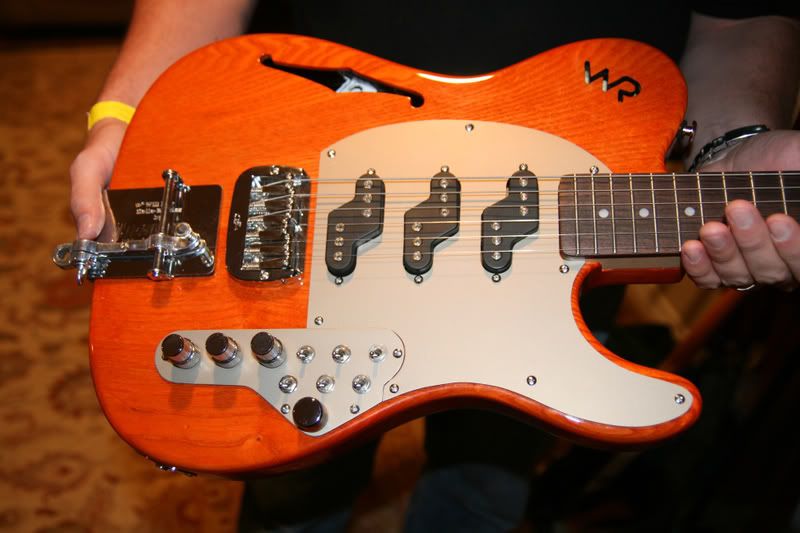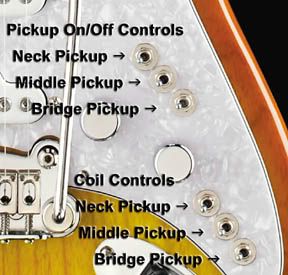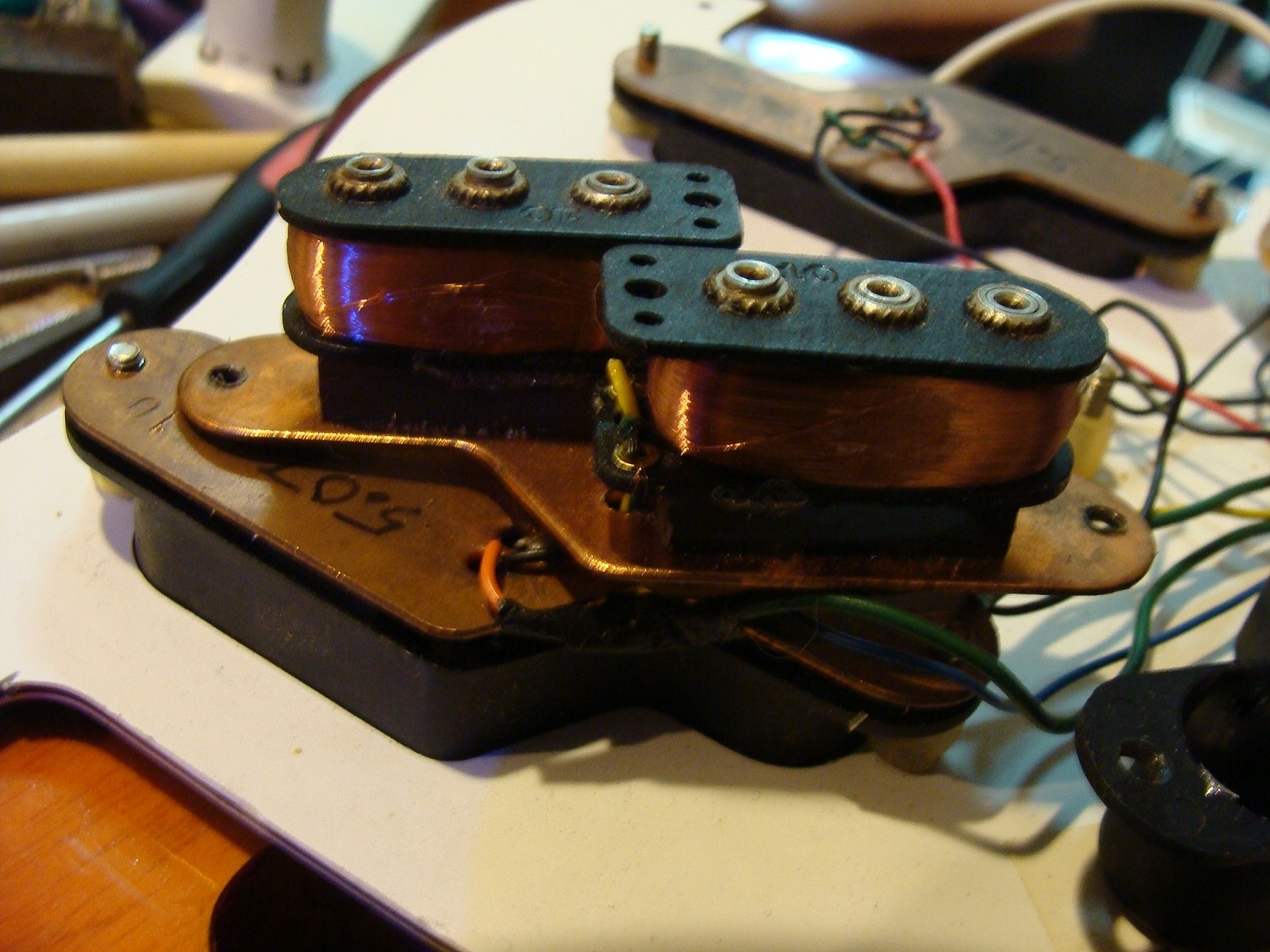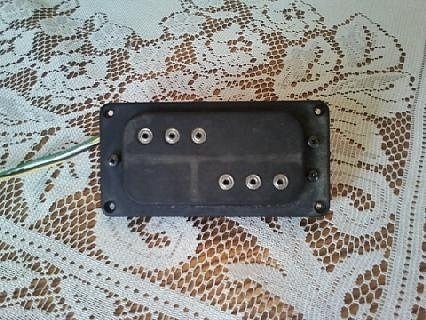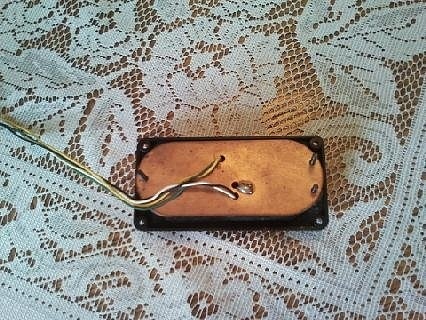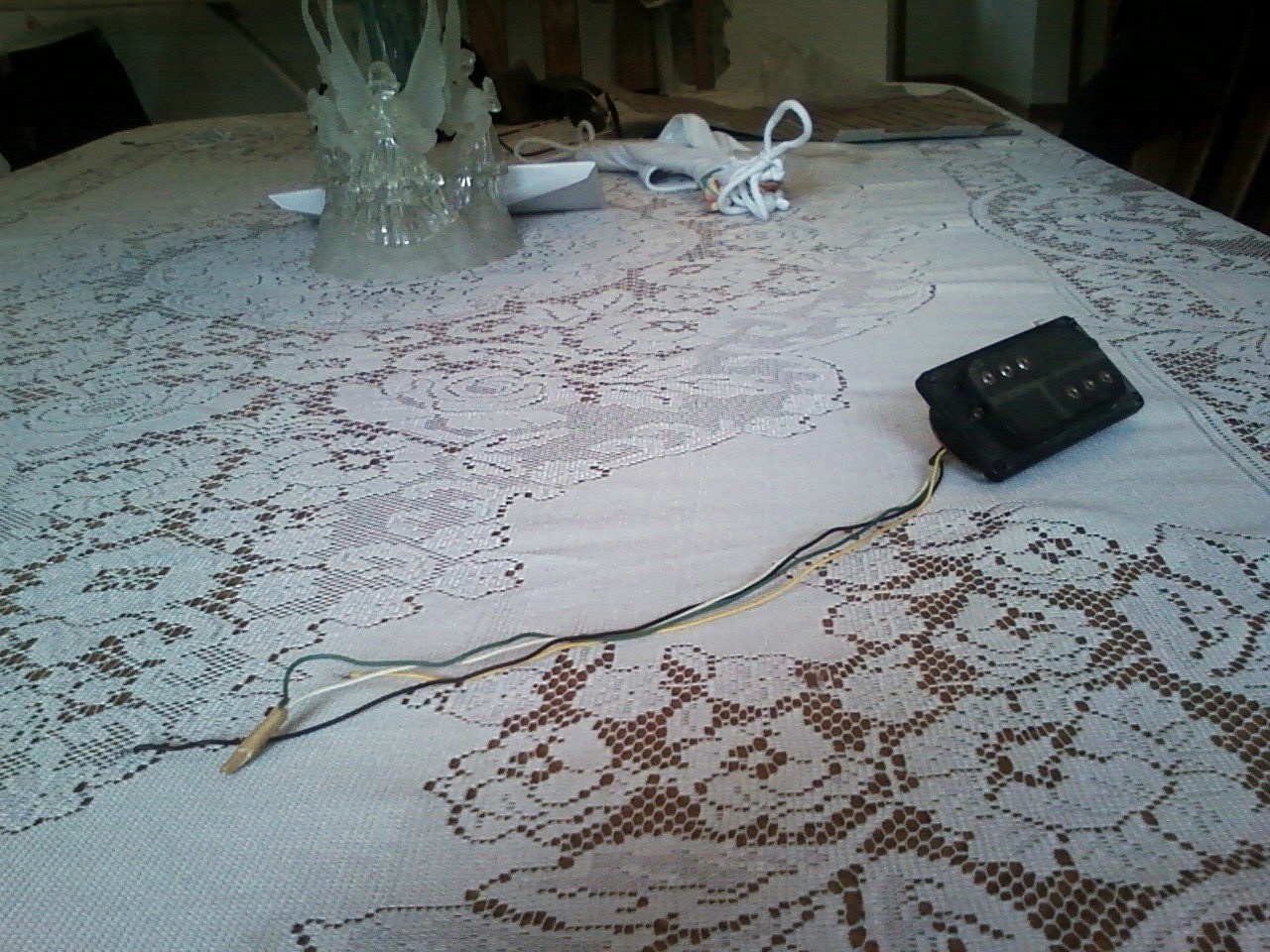Breakfast
Guess you know the drill now: coffee in the morning while the summer won't stop. Have to get into work a little earlier on Thursdays for a 1:1 with one of my project managers.
G&L Related
This will be a first for me. At the time of writing, an early Comanche VI is listed on daBay which is the subject of a post on this forum. Earlier this week I received information from a friend of mine, who would rather remain anonymous, on the fascinating history of the Comanche V and VI and Z-coil pickups in particular. I can fully vouch for the integrity and knowledge of this person. Since this person is not posting on this forum, I was asked to act as liaison and publish the information. So I will not claim authorship of today's piece but will take full responsibility for any typo that may have occurred. I have added links where appropriate. Where it refers to "I" and "me", it relates to the original author. Enjoy!
- Jos
"The origins of the Comanche can be traced back to Leo’s Precision Bass pickup of the 50’s. 60 cycle hum was always a problem with many Fender instruments. In fact, at one NAMM show, Danelectro actually had a Fender Telecaster hanging on the wall next to one of their instruments. Both were plugged into amplifiers and the booth personnel would demonstrate how quiet the Dano product was compared to the Fender that would buzz, howl and even screech as you turned up the volume on the amplifier. Of course, the Dano had the advantage of having its pickups entirely shielded thanks to the surplus lipstick tube enclosures they were installed in. Leo’s experimentation with how to get an authentic single coil sound with no noise was definitely something he spent more time on than anyone else past or present. Few folks realize that he actually had working prototypes of designs others claimed as their own decades earlier including stacked humbucking single coil size pickups, etc.
One of Leo’s first prototypical humbucking pickups for guitars was actually two side-by-side coils wired up with one coil having reverse wound/reverse polarity compared to the other. This would work just fine for a lap or pedal steel instrument, however, what he found was that there was a sizable drop in volume between the “D” and the “G” poles if you bent the G string across this gap. Of course, this makes perfectly good sense. He then experimented with staggering the coils with the thought process that the treble string coil should be closer to the bridge, for a brighter sound and the bass coil closer to the neck for a deeper sound. This was first employed on the P-Bass in 1957. Interestingly, hooking up two coils in the so-called, “humbucking’ mode, was really nothing new. Seth Lover is famous for the pickups he designed with this feature, however, the truth is the science of this was well known by the time he had done this (Do a little research on EV’s work on humbucking coils as well as patent 2119584). Yes, Gibson was the first to do it on a large commercial basis as it related to guitars…that’s a fact but Leo and his team were well aware of this long before the 50’s had rolled around.
The reason Fender did not apply the P-Bass design to the production guitar models was because his fleet of test players loved the sound of Fender pickups. They loved the strident highs, the complex nature of harmonic content and the sheer versatility. Those that knew Leo knew that he was actually quite fond of the sound of the Gibson P-90 pickup. He stayed away from copying it because he wanted his instruments to have an instantly identifiable sound as well as look. He famously noted that when Gibson switched from the P-90 to the PAF humbucker that most Gibson products sounded like you were playing through an amplifier covered with a blanket. The PAF has its place and its unique tonal qualities though for sheer musical practicality, it is tough to beat a properly designed and implemented single coil.
Leo continuously worked on different approaches to solve the noise problem through the 50’s and into the 60’s. He had a staggered coil guitar pickup sitting around his lab at any given point in time and frequently it was installed in a test mule instrument. He continually changed the variables while he experimented. Some had narrow/tall bobbins, others had wide/short bobbins, while others existed with parameters in between. He had some 4 + 2 pole or 2 + 4 pole variations along with the traditional 3+3 format. Feedback from the test players was inconsistent which is why this design took so long to make it to production. When Don Randall pushed Leo to come up with a product to compete with the incredibly popular Rickenbacker 360/12-string electric guitars, Leo devised the Electric XII model which, of course, utilized what would become Leo’s first production sighting of this design in a guitar model.
At the time, most of the Rickenbacker faithful claimed the Fender simply lacked the jangle of the Rick. But e.g. Pete Townsend and Jimmy Page are a couple of other dudes that felt the XII worked just fine. There are XII tones all over Tommy and obviously, the studio cut of Stairway to Heaven had the 12 string parts coming from an XII.
After the introduction of the XII…Leo had sold the company to CBS. He continued to consult and was very active in R&D efforts though most were ignored by the cocky CBS brass.
Leo never stopped with the R&D efforts though he did spend more time with other passions he had (boating, real estate development, etc.). By the early 70’s, when his old cohorts dragged him back into the musical instrument industry with Music Man, it would not be long before instrument building would be at the forefront of Leo’s thought process. Few folks realize that the earliest Music Man prototypical guitars actually had what are essentially Z-coil pickups in them. Leo had numerous pickup designs in the works but the earliest test mule guitar had large-pole, staggered humbucking pickups in it. These were a bit of a departure from the XII in that they were designed to work with a full-time, Op-Amp based pre-amp and thus their coil parameters radically different. For a variety of reasons, a more traditional humbucker coil arrangement was employed on the production guitar (Stingray) which is actually fantastic sounding though much maligned due to the aesthetics and sheer mass of the instrument. If you want to hear one of these beasts (and they are beasts!) in the hands of a very capable guitarist…look no further than Paul Barrere during his Little Feat days with Lowell George. Just search YouTube and you’ll see and hear what I mean.
So the concept of the Z-Coil was very much alive before, during and after CLF…
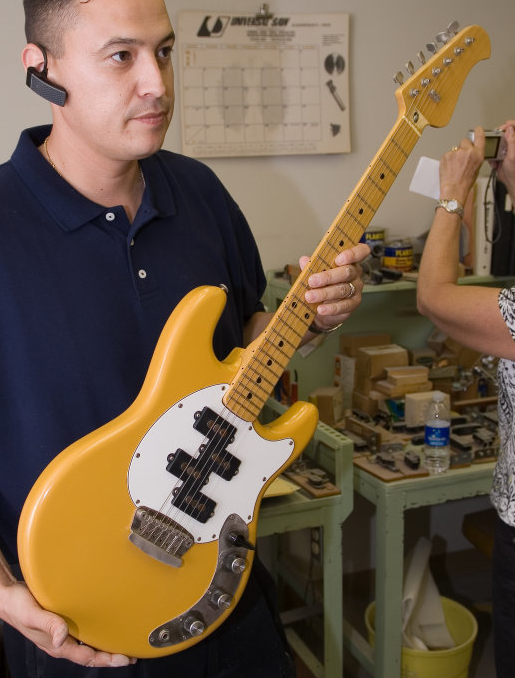
Fast forward to G&L.
When Leo devised the MFD…he was still building and shipping guitars with Music Man decals on the headstock. He was fired up about the MFD but Tommy Walker was not. In fact, Tommy was not happy with the whole CLF arrangement and wanted to take over control of the instrument manufacturing, including the R&D. Obviously, Leo was too well heeled in those days for such a thing to happen…besides, Leo had no shortage of ego…and maybe rightfully so. When Leo first put together prototypes of the MFD, he built both humbucking and single coil variations. When exactly he had assembled the Z-Coil is not definitively known, however, Dale Hyatt, who started discussions with Leo on getting involved in 1979 assured me that Leo was playing around with the concept of it very early on…as in shortly after they launched the brand in the spring of 1980. The remnants of Leo’s office/lab tell quite a few stories regarding the Z-Coil as well as many other pickups Leo designed during this very prolific era. Unfortunately, the inventory of Leo’s is far from intact. One has to look no further than George Fullerton’s factory blueprint for the G&L “Wild Horse” guitar to see what the first G&L Z-Coil instrument might have been…
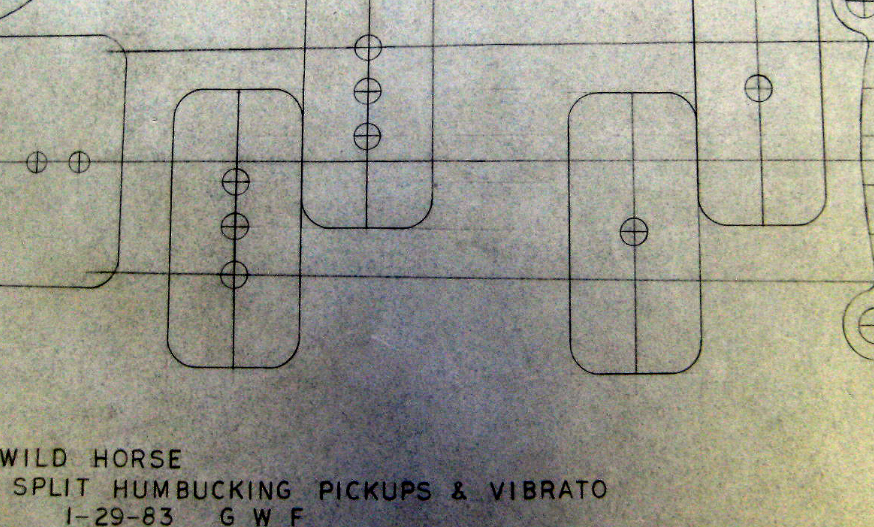
OK, if you are following along you are thinking…what the hell does all this have to do with the black Comanche VI on E-Bay? Good question…
OK, so the Comanche model…where did it come from?
Well, here is how it really started. Dale requested that Leo make a MFD based humbucking pickup that would be swappable with a Gibson PAF. Leo worked on this on and off starting in 1982. He didn’t like the limitations of working within the confines of the Gibson PAF and consequently, didn’t exactly pour much effort into this task. Eventually, Dale had no choice but to sidestep Leo because he very much needed a Superstrat product offering and Leo wasn’t helping (He also asked for a fine tuning bridge early on). The Invader, Rampage and Superhawk models were one of many examples of Dale forcing the issue. Leo didn’t like to see a bridge and pickups that he did not design installed in his own brand of instruments. Even though Helmut Schaller was a very dear friend…it didn’t sit well with him. Leo hoped the line would flail and die…but it did not. If anything, it was quite the opposite. By 1985, Leo got serious about designing what Dale had requested.
During this time, Leo built numerous variations on the theme of a pickup what could be retrofitted inside any guitar with a PAF style humbucker. One of these prototypes that caught Dale’s eye was the Z-Coil. Of course, at this time, it was just two coils with two separate magnets mounted on a steel plate that could be hung from a PAF mounting ring. The wheels started turning in Dale’s mind and he was liking both the production possibilities along with the aftermarket options for such a pickup. Buddy Kendrick was the first test player to give it a whirl and he was favorably impressed. He liked the lack of noise and single coil-like voicing it had. Other test players similarly tested it and all felt it was something worth pursuing. Leo wasn’t as impressed as the test fleet. He felt it required much more R&D before it would be ready. Leo’s health and other conflicting priorities slowed progress on the Z-Coil but eventually parameters were nailed down and tooling sourced to make the specialized components.
Some have claimed that another test player, the now famous John Jorgenson, was the impetus for the Z-Coil. This is most definitely not true. Yes, JJ definitely tested it out, as did many other players and he did express a like for the design but Leo most definitely didn’t design it for JJ. Other test players were not as impressed, Jeff Ross is a great example.
By the time the pickups were ready for implementation, Dale had already put quite a bit of thought into what to do with them from a branding perspective. Initially, he considered making them an option on existing models but then changed his mind thinking they were unique enough and special enough to deserve a home in a new model. The decision to use the sickle headstock and 3rd generation Interceptor body shape had to do with the timing of the launch. Different variations of the “Long Horn” double cutaway body were in field testing. This body was actually being developed to replace the X-Body which proved nearly impossible to sell necessitating a complete redesign. The “titless” sickle headstock was designed to mate with the long horn body though there happens to be an interesting post 2nd generation, pre-3rd generation Interceptor that sports a very radical long horn body mated with an early style “titted” sickle headstock. This withstanding, there was a lot of excitement around the sleek appearance of the long horn body with the new style sickle and Dale wanted to get it to market. Because of his fondness for this new look, he decided to package the new Z-Coil guitar into this format.
Keep in mind, even though the perimeter is essentially the same as the 3rd generation Interceptor, it is actually quite different in that the Interceptor has sharp bevels running around the face and back perimeters whereas the Comanche body has a traditional forearm and belly contour arrangement.
All Early Comanche’s have this body and headstock shape, with no exceptions. These guitars pre-date the “Leo Fender Signature Series” versions and thus could never have been ordered as part of this offering. They did have the small “Leo Fender” signature decal on the headstock as did most other G&L’s of the same vintage.
The original Comanche you could buy is what we call today the Comanche V. They all had the long horn body with the sickle headstock. The two coils of each pickup were wired in series which is how the BBE take on the Comanche is wired. The Comanche did not sell well. In the late 80’s there was a clear division between the traditional products (Tele, Strat, Les Paul, 335) and the Super Strat market (dominated by Kramer, Charvel, Jackson and Ibanez). The Comanche was a sleek appearing curiosity but didn’t fit into the guitar buying public’s want list. Those few that did purchase the Comanche noted that it did indeed has a single coil-esque voice but with a decidedly more punchy midrange compared to a traditional alnico slug pole Fender product. Dale said many players did not care for their inherent sound and preferred the straight MFD single coils. He did say that some players loved the silent operation and single coil approximation they provided. The new styling wasn’t hated but it wasn’t loved either. Most felt it would be better to package it to be more similar or familiar to a traditional Stratocaster. Leo felt the pickups needed more R&D so he kept changing the parameters trying to figure out the secret recipe though none of these changes would ever make it to production.
This was an ongoing theme that Dale was struggling with. The dealers wanted the G&L products to be Tele’s and Strat’s. Leo didn’t want to build either. Dale had to find some common ground.
After the launch of the Comanche, Dale was struggling what to do with it. He loved the whole Z-Coil concept but was not sure how to get anyone interested in it. He came up with the idea of marketing it to studio’s as well as studio musicians. He was thinking how far can we push the versatility of this thing? We’ve got 6 coils…what if we let the player turn them all on or off? He enlisted the assistance of his employee, Steve Reed. They ran through what combinations made sense and which didn’t. At the end of the day, they settled on the ability to turn each pair on or off and then adding 3 additional mini toggles to allow turning each coil on or off. The design meant that each pair was now wired in parallel. This had an interesting and favorable impact on how the instrument would sound compared to the V. Most of the test players were somewhat bewildered by all the switching options but the feedback regarding the sounds available was very positive. Encouraged, Dale dropped off a few guitars to some of his local LA based studio buddies. The feedback was very positive. The only complaint was that the output seemed lower than typical (which is was due to the parallel connections) but all said that was easily remedied by turning up the volume of the amp. This prompted Dale to introduce the 6-switch Comanche and the now semi-famous advertisement slick [Ed. note: I'm not sure whether the original author means these slicks or whether there is another earlier one for the 3rd body Interceptor versions of the Comanche V and VI] and magazine trade advertising of that time.
Dale also made preparations to offer the pickups to the aftermarket where you could literally purchase a Z-Coil that mounted in a special cover that would literally drop right into any guitar with a PAF in it. These were never intended to leave the factory…but there is a small inventory of them that did.
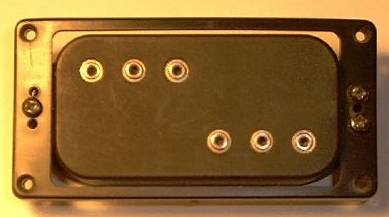
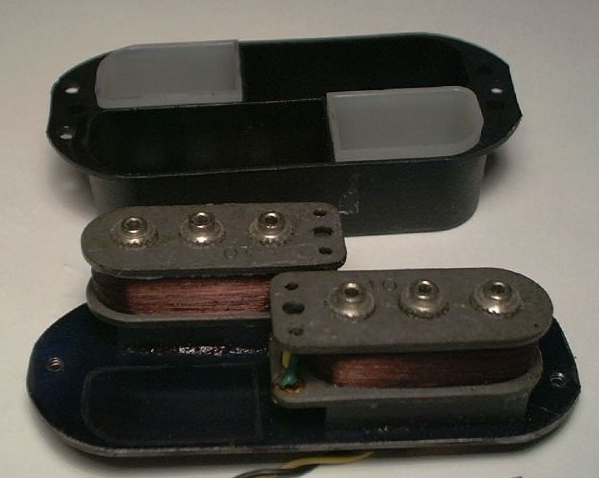
Unfortunately, it never caught on. The market just wasn’t looking for such an instrument…as fine as it was, studio musicians were more than happy with their arsenals of old guitars and the rest of the public basically ignored it.
While Dale was busy “Fenderizing” the Skyhawk and S-500, he decided to do the same to the Comanche…why not? That’s what the dealers had been begging for all along. It would not be long before all these models received revised body shapes as well as headstock shapes. At the time, the dealers were thrilled with these changes. For the G&L faithful, such as myself, that appreciated the uniqueness of the earlier G&L’s…it was a move in the wrong direction.
The early body/headstock style of the Comanche guitar (V or VI) is far more rare than the later “Skyhawk” bodied version. BTW, they did put sickle headstocks on the Skyhawk bodies as well…more than a few are known to exist.
Another interesting note is that of the early style long-horn bodied Comanche’s, the vast majority have rosewood fingerboards. Why? Because that is what was ordered. Finding a long-horn, sickle headstock Comanche V with a maple board is fairly difficult to do. Finding a long-horn, sickle headstock Comanche VI with a maple board is perhaps the most difficult to source production pre-BBE instrument to find. The black guitar on E-Bay right now is only the 4th I’ve seen to date.
Comparatively speaking, a maple board Comanche V or VI with a Skyhawk shaped body is very easy to locate….yet in the grand scheme of things, they are plenty rare too!!!
The black guitar on E-Bay right now is obviously not mint. I’d surmise it was produced in 1989. Missing the OHSC is a detriment given that finding an original case is pretty much an impossibility. G&G will build you one but unfortunately, it will never be original. You can clearly see that it has the factory optional Sperzel tuners (a great thing) and the ubiquitous #2 neck option. The original vibrato arm, if gone, is difficult to replace as the arms you can get from BBE today have a different bend and no compression slot cut in the insertion end.
Still, is it worth $1,500? I’d say yes. Back at the market peak of 2007, it would sell quite easily for $2,500…perhaps even $3K given the maple board.
Nothing else on the market then or now can produce the timbres of one of these oddities. My only complaint is the bridge pickup…it is too thin and weak for my liking. I’ve never cared for the Comanche V…in fact, every one I’ve owned I’ve sold off because of this. Same goes for the BBE take on the Comanche…just doesn’t work for me. The limited run VI that they came out with a while back I do like…but then again, it is essentially the same thing as the original ignoring the machine wound pickups and the Legacy body and neck the pickups and circuit are mounted to.
BBE has done plenty of experimentation with the Z-Coils. I’m with Will though…the stock Z-Coil bridge pickup is too thin sounding for my liking. I very much do like the Will Ray bridge pickup…it should be stock on all Z-Coil guitars in G&L’s lineup…but that’s just my opinion."

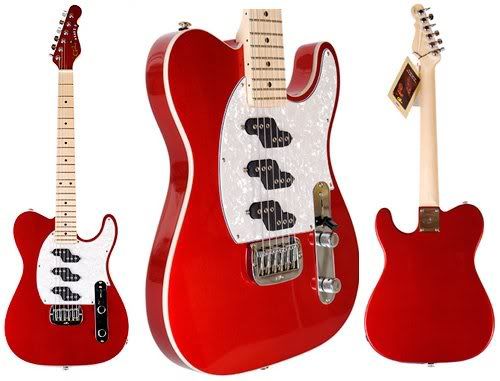
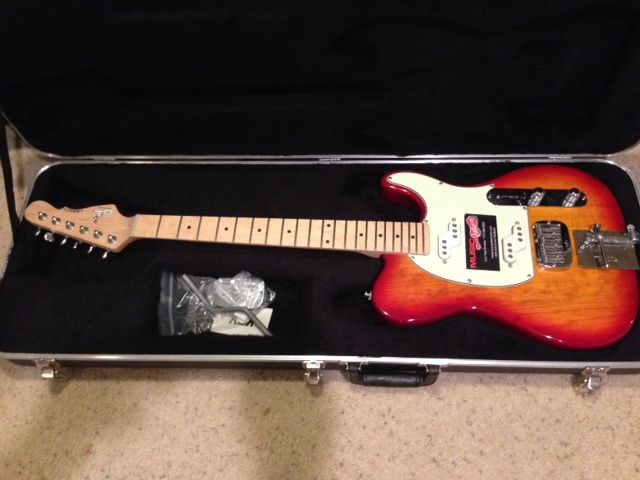 My project tribby ASAT Z2 with Hipshot and custom wound pups (big fun)
My project tribby ASAT Z2 with Hipshot and custom wound pups (big fun)